August 5th Scots Book of Days
August 5 642 Oswald King of Northumbria Martyr.
1328 River Wear, north east England, on the North Sea, the Scots camp opposite the English army with Edward 2nd. Douglas passed the river Wear at midnight with a body of horse, broke into the English camp, penetrated to the royal tent, and slew the chaplain and household, while the king Edward escaped. Douglas cut his way through the English to return to the Scots camp. Tytler’s Britannica 54.
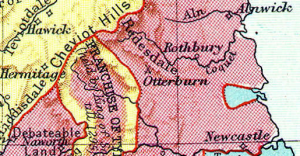 1388 the Battle of Otter burn, Northumberland. Scots’ commander, James Douglas, 2nd Earl of Douglas killed. Border War. Despite Percy’s force having an estimated three to one advantage over the Scots, Froissart records 1040 English were captured and 1860 killed whereas 200 Scots were captured and 100 were killed. The Westminister Chronicle gives an estimate of Scottish casualties as 500 or so. When the Bishop of Durham advanced from Newcastle with 10,000 men, the Bishop was so impressed by the ordered appearance of the Scottish force, the din they set up with their horns, and their seemingly unassailable position, that he declined to attack. A descendant of Robert was Sir John Montgomery who led the Clan Montgomery at the Battle of Otterburn in 1388 where the English were defeated. Montgomery was one of the heroes of the day as he distinguished himself by capturing Sir Henry Percy who was known as “the Hotspur”. The Percy family paid a great ransom for the release of Henry “Hotspur” Percy and this money enabled the Clan Montgomery to build the Polnoon Castle.
1388 the Battle of Otter burn, Northumberland. Scots’ commander, James Douglas, 2nd Earl of Douglas killed. Border War. Despite Percy’s force having an estimated three to one advantage over the Scots, Froissart records 1040 English were captured and 1860 killed whereas 200 Scots were captured and 100 were killed. The Westminister Chronicle gives an estimate of Scottish casualties as 500 or so. When the Bishop of Durham advanced from Newcastle with 10,000 men, the Bishop was so impressed by the ordered appearance of the Scottish force, the din they set up with their horns, and their seemingly unassailable position, that he declined to attack. A descendant of Robert was Sir John Montgomery who led the Clan Montgomery at the Battle of Otterburn in 1388 where the English were defeated. Montgomery was one of the heroes of the day as he distinguished himself by capturing Sir Henry Percy who was known as “the Hotspur”. The Percy family paid a great ransom for the release of Henry “Hotspur” Percy and this money enabled the Clan Montgomery to build the Polnoon Castle.
- Douglas 1036 2Stewart 2Ruthven 2Kinchin 2Jared 2Simmons 2Choate – D 2Montgomberie 2Blair 2Cochrane 2Miller 2Simmons 2Choate – D 2Hamilton 2Stewart 2Miller 2Simmons 2Choate – D 2Carlyle 2Semple 2Montgomery 2Cochrane 2Miller 2Simmons 2Choate
Map of 1402 Scottish borders, Battle of Otter burn, Northumbria, Between Newcastle, river Tweed, and River Coquet, River Aln to Alnwick. Other sites, Rothbury, cheviot Hills, Radesdale, Teviotdale and Hawick.
1460 [TG22-307, Scott’s Tales of a Grandfather, TG, chap. 22, p. 307] Upon the lamentable death of James II, [Stewart King of Scots,] the army which lay before Roxburgh was greatly discouraged, and seemed about to raise the siege. But Margaret (sic) [Mary of Guelders], the widow of their slain Monarch, [James 2nd] appeared in their council of war, leading her eldest son, a child of eight years old, [James 3rd] who was the successor to the crown, and spoke to them these gallant words: “Fy, my noble lords! think not now shamefully to give up an enterprise which is so bravely begun, or to abandon the revenge of this unhappy accident which has befallen before this ill-omened castle. Forward, my brave lords, and persevere in your undertaking; and never turn your backs till this siege is victoriously ended. Let it not be said that such brave champions needed to hear from a woman, and a widowed one, the courageous advice and comfort which she ought rather to receive from you!” The Scottish nobles received this heroic address with shouts of applause, and 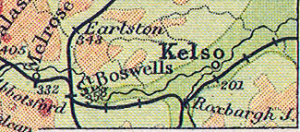 persevered in the siege of Roxburgh castle, until the garrison, receiving no relief, were obliged [TG22-308, TG, Chap. 22, p. 308] to surrender the place through famine. The governor is stated to have been put to death, and in the animosity of the Scots against every thing concerned with the death of their King, they levelled the walls of the castle with the ground, and returned victorious from an enterprise which had cost them so dear.
persevered in the siege of Roxburgh castle, until the garrison, receiving no relief, were obliged [TG22-308, TG, Chap. 22, p. 308] to surrender the place through famine. The governor is stated to have been put to death, and in the animosity of the Scots against every thing concerned with the death of their King, they levelled the walls of the castle with the ground, and returned victorious from an enterprise which had cost them so dear.
‘Repent, repent ye, Hear the words of that God who made you, by the voice of famine.’ Jesus Christ in Doctrine and Covenants section 43.
Roxburgh castle on the River Tweed between Kelso and Melrose. Other sites Earlston, ST. Boswells.
In 1675 after the Civil War the Clan Montgomery who were crippled by debts after supporting the Royalists against Oliver Cromwell sold the Lordship and Manor of Newtown to Captain Robert Colville for £10,640.
- Colville of Easter Wemyss 1132 2Semple2Montgomery 2Cochrane2Miller 2Simmons2Choate zoe ToaG
There is a Newtown, which is now called NewTownArds county Down, Northern Ireland, founded in 1606 by Hugh Montgomery, and settled with Scots.
1548 St Germain France. Sometime in August. Mary Queen of Scots, age 6, arrived safely with Lords Erskine and Livingston, her governors, as the marriage to the French Dauphin. Tytler’s Britannica.
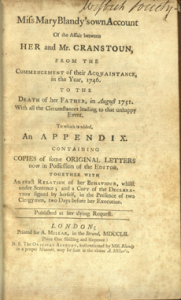 1560 – the Scots Confession was presented to Parliament, voted upon, and approved.
1560 – the Scots Confession was presented to Parliament, voted upon, and approved.
1751 Sometime in August, death of the Father of Mary Blandy, biography printed for A. Millar, London in the Strand. (Miller’s clans Stewart, Lockhart, and Hunter)
Mifs Mary BLandy’s own Account of the Affair between Her and Mr. Cranstoun, etc. London Printed for A. Millar, in the Strand, MDCCLIII.
1781 Dogger Bank, North Sea, is a sand bank 62 miles, off the England’s east coast about half the area of Scotland. Dutch fleet under Admiral Zoutman meet British fleet under Sir Hyde Parker. Tytler’s Britannica 253.
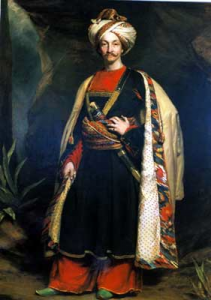 1842 August to October. The Battle of Kabul 1842. First Afghanistan War, and not the last.
1842 August to October. The Battle of Kabul 1842. First Afghanistan War, and not the last.
Captain Colin Mackenzie, Madras Army, after his release from captivity.
1890 “By 1890 the Scots in Utah numbered 3,474 and had become a well-recognized part of Utah’s foreign-born population, ranking as the third largest immigrant group between 1850-1870 and the fourth largest between 1880-1900.” HISTORY SCOTLAND – MAGAZINE
1906 John Huston (born August 5, 1906 – August 28, 1987), son of Canadian-born Walter Huston. Walter’s father was of Scots descent. Anjelica Huston is a daughter of director John.
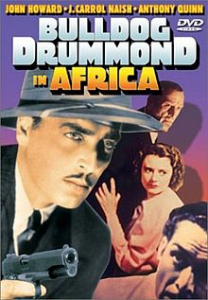 1938 Bulldog Drummond in Africa. Released. Fictional Scots hero. Drummond, his girlfriend and his butler try to free a kidnapped officer.
1938 Bulldog Drummond in Africa. Released. Fictional Scots hero. Drummond, his girlfriend and his butler try to free a kidnapped officer.
1953 The Master of Ballantrae movie released. In 1745 fictional Scotland, two sons of a Laird are rivals for the family estate and for a lady. At the Durrisdeer estate in Scotland in 1745, the year of the Jacobite Rising, the older son Jamie Durie (the Master of Ballantrae) and his younger brother Henry Durie, decide that one of them will join the uprising while the other will join the loyalists, so whichever side wins, 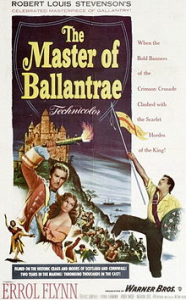 the family’s noble status and estate will be preserved. At the toss of a coin, The Master wins and departs to join the Rising, while Henry remains in support of King George II. The Rising fails at the Battle of Culloden; in 1749, the Master falls in with an Irish adventurer, Colonel Francis Burke. BY 1756, the Master returns under an alias, comes and goes. By 1764, the Master returns to take a wife from Scotland to New York, where the intrigue goes on.poster. By
the family’s noble status and estate will be preserved. At the toss of a coin, The Master wins and departs to join the Rising, while Henry remains in support of King George II. The Rising fails at the Battle of Culloden; in 1749, the Master falls in with an Irish adventurer, Colonel Francis Burke. BY 1756, the Master returns under an alias, comes and goes. By 1764, the Master returns to take a wife from Scotland to New York, where the intrigue goes on.poster. By 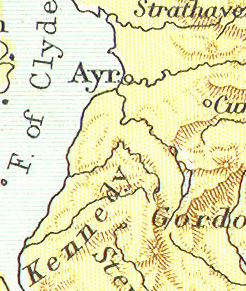 Robert Louis Stevenson. Ballantrae (Gaelic for town by the beach) is a community in Carrick, South Ayrshire, Scotland.
Robert Louis Stevenson. Ballantrae (Gaelic for town by the beach) is a community in Carrick, South Ayrshire, Scotland.
Carrick in Ayr. Ballantrae is somewhere in here.
1959 The Bridal Path. Movie Filmed in Scotland. A young man on a remote Scottish island travels to the mainland in search of a wife. The story begins on Eorsa, an island in the Inner Hebrides of Scotland. 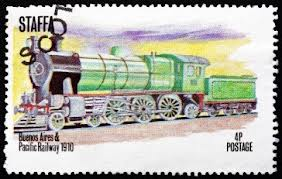 Ewan MacEwan, a widower and father of two, is in need of a wife. Related to everyone on the island, he heads to the mainland in search of a suitable woman. www.123rf.com
Ewan MacEwan, a widower and father of two, is in need of a wife. Related to everyone on the island, he heads to the mainland in search of a suitable woman. www.123rf.com
Staffa from the Old Norse for stave or pillar island, is an island of the Inner Hebrides in Argyll and Bute, Scotland. The Vikings gave it this name as its columnar basalt reminded them of their houses, which were built from vertically placed tree-logs. Wikipedia
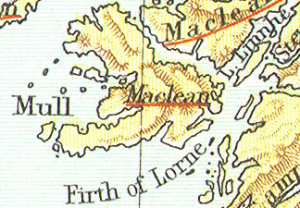 Eorsa is on the west coast of the Iste of Mull, just about at the end of the Loch north, and at the top of the ‘M’ in Maclean on the map. Inner Hebrides, Argyll and Bute. were Gilbert de Clare, 1st Earl of Pembroke and Isabella de Meulan.
Eorsa is on the west coast of the Iste of Mull, just about at the end of the Loch north, and at the top of the ‘M’ in Maclean on the map. Inner Hebrides, Argyll and Bute. were Gilbert de Clare, 1st Earl of Pembroke and Isabella de Meulan.
Utah Standard News depends on the support of readers like you.
Good Journalism requires time, expertise, passion and money. We know you appreciate the coverage here. Please help us to continue as an alternative news website by becoming a subscriber or making a donation. To learn more about our subscription options or make a donation, click here.
To Advertise on UtahStandardNews.com, please contact us at: ed@utahstandardnews.com.


Comments - No Responses to “August 5th Scots Book of Days”
Sure is empty down here...